
Soil Associations
0711b BROCKHURST 1
Soil and site characteristics
Slowly permeable seasonally waterlogged reddish fine loamy over clayey soils. Some similar soils with slowly permeable subsoils and slight seasonal waterlogging.
Geology
Permo-Triassic reddish mudstone and till
Cropping and Land Use
Winter cereals and short term grassland some dairying and stock rearing.
Component soil series
| Subgroup | Series name | Percentage | WRB 2006 link |
|---|---|---|---|
| 7.11 | BROCKHURST | 40% | Chromi-Albic Luvic Planosols |
| 7.11 | SALOP | 20% | Chromic Eutric Albic Luvic Stagnosols |
| 5.72 | WHIMPLE | 15% | Chromic Endostagnic Luvisols |
Covers 518 km2 in England and Wales
Soilscapes Classification
| 18 |
Slowly permeable seasonally wet slightly acid but base-rich loamy and clayey soils |
0711b BROCKHURST 1
Detailed Description
The soils of this association which are mainly fine loamy over clayey are widely distributed in the lowlands of the Midlands and South West England and have slowly permeable subsoils. The component Brockhurst and Salop series are typical stagnogley soils, characterized by their reddish matrix colours and prominent greyish mottles in the subsoil. Brockhurst series is developed in mudstone and Salop series in till. Whimple soils, stagnogleyic brown earths, are fine loamy over clayey and a common associate soil. The association occurs mainly on Triassic mudstone in Nottinghamshire, Staffordshire, Leicestershire, on the Birmingham plateau between Redditch and Leamington Spa and fringing the Ridgeway and the Malvern Hills. It is also found on Upper Coal Measures in north Shropshire and Staffordshire. Between Henley-in-Arden and Birmingham the association is found in valleys of the Alne and Blythe and their tributaries. Here there is a significant component of Fladbury and Spetchley series with Arrow, Wick and Bishampton soils on patches of river terrace deposits. Wigton Moor soils are included near Redditch. In Warwickshire, where the underlying mudstone is often greenish grey, Wickham and Oxpasture soils are found. These are particularly common at Baddesley Clinton. Flint and Astley Hall soils are minor components found mainly in valley bottoms or on lower slopes. This footslope drift is often composed of cryoturbated mudstone. Worcester and Whimple soils are found occasionally on steep slopes which have rapid run-off. These are more common in Shropshire than elsewhere. East of the Malvern Hills there are fine loamy over clayey soils which were formerly mapped as Welland series. These have hard, metamorphic stones in the upper horizons which overlie reddish Triassic mudstone. The main subsidiary soils belong to the Spetchley series. Small patches of deep, very stony drift carry Mayalls and Assarts series. In Nottinghamshire and Leicestershire, the association is found almost entirely on upper valley slopes with small patches of Salop series and some Spetchley series. Flint or Astley Hall soils are found in Leicestershire but soils developed in terrace deposits and alluvium are rare. In Devon and Somerset Brockhurst soils predominate on footslopes and low ground and also occur on ridge crests where loamy drift overlies Permo-Triassic mudstone. Within the reddish mudstone there are grey bands which are occasionally thick enough to give non-reddish Wickham profiles or less mottled Oxpasture soils. Clayey Spetchley soils occur locally in similar positions, but Salop soils are uncommon. Better drained fine loamy over clayey Whimple soils are common, with small patches of similar Hodnet soils on thin interbedded fine sandstones in the mudstones. Small areas of Hense soils occur in flush sites at the base of overlying Greensand in east Devon. In Gloucestershire the association is found on gentle slopes below outcrops of Palaeozoic sandstone and mudstone. Brockhurst is the main soil series, with Whimple soils on the ridge crests and occasional Salop soils in patches of deep stony drift.
Soil Water Regime
Brockhurst and Salop soils though moderately porous in the topsoil are slowly permeable at depth and are waterlogged for long periods during the winter (Wetness Class IV). After appropriate drainage Brockhurst and Salop soils are normally waterlogged for relatively short periods in winter (Wetness Class III) except where annual rainfall greater than about 800 mm makes them wet for much of the winter (Wetness Class IV). Whimple series has slowly permeable subsoils but after suitable drainage it is drier (Wetness Class III, or II where the annual rainfall is less than 650 mm). These classes are appropriate to the wettest parts of the South West, so the wetness of corresponding soils in north Gloucestershire is one class less severe. When these soils are waterlogged disposal of excess rainwater is mainly by lateral flow.
Cropping and Land Use
With efficient underdrainage and careful management, the soils give moderately good crops of grass and cereals. Opportunities for spring cultivations however, are brief so autumn sowing is favoured. In wet seasons the available autumn period is limited and direct drilling, which enables sowing to be condensed to a short period when conditions are optimum, gives more flexibility in timing. Though much of the grassland is temporary, permanent grassland occurs on low-lying ground which is difficult to drain effectively. Stocking is governed mainly by poaching risk which restricts late winter and early spring use, though in dry years grass growth is checked by droughtiness. Brockhurst and Salop topsoils retain large amounts of water and have little bearing strength when at or near field capacity. Water movement is so impeded that even when the soils are efficiently drained surface horizons dry out slowly. Whimple soils have a moderate to high retained water capacity but remain wet for shorter periods than the Brockhurst and Salop soils. Consequently they can be grazed later in autumn and earlier in spring.
Most component soils have a moderate to high base status and nutrients are not readily leached. They are mostly slightly acid in upper horizons but occasionally become calcareous at depth. Potassium and magnesium reserves are usually adequate for most crops and phosphorus levels depend on past management.
0711b BROCKHURST 1
Distribution Map
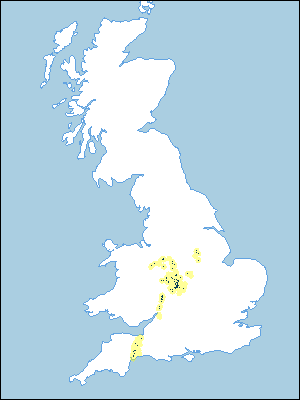 |
Note that the yellow shading represents a buffer to highlight the location of very small areas of the association.
Keys to component soil series
Midlands
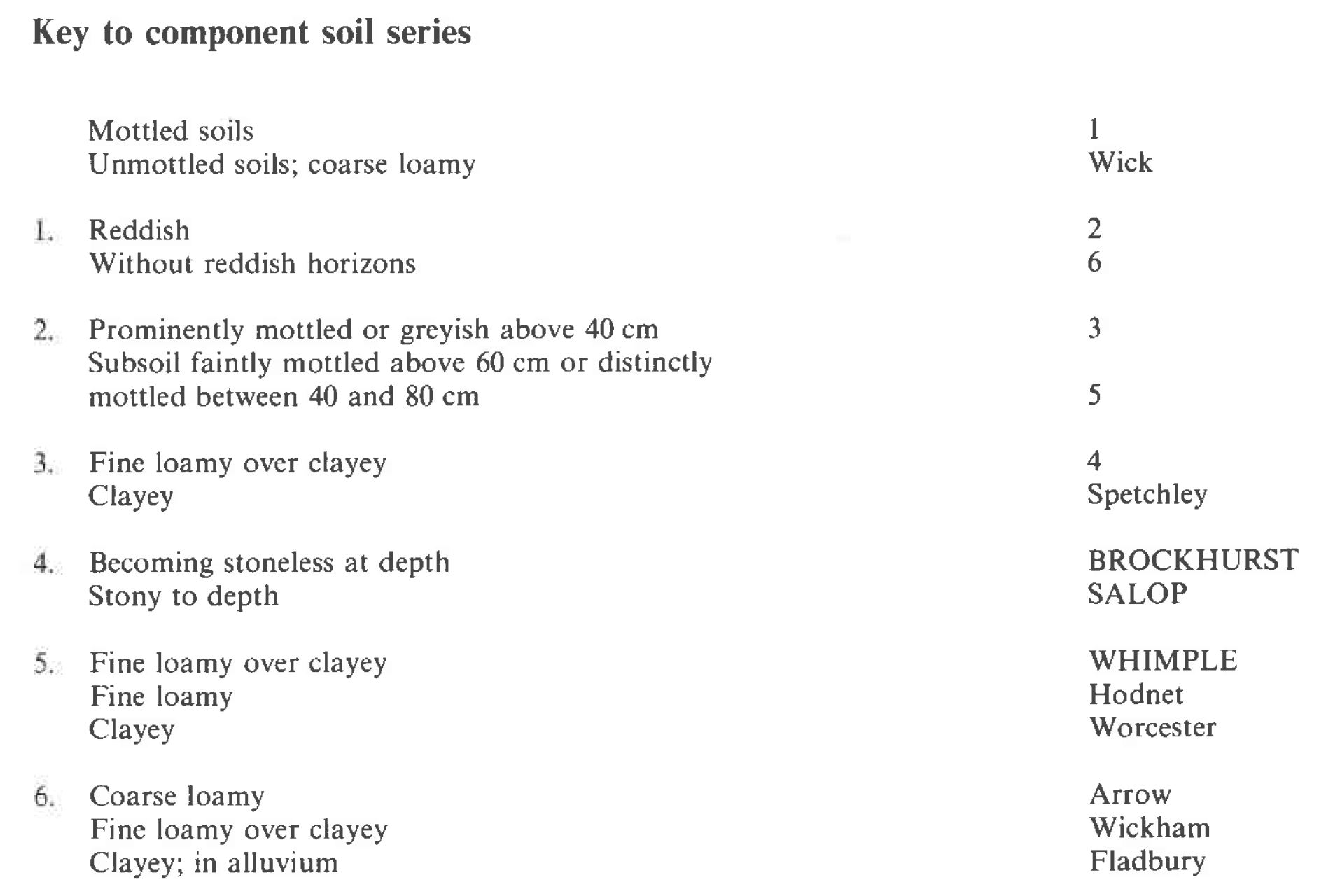 |
South Western Region
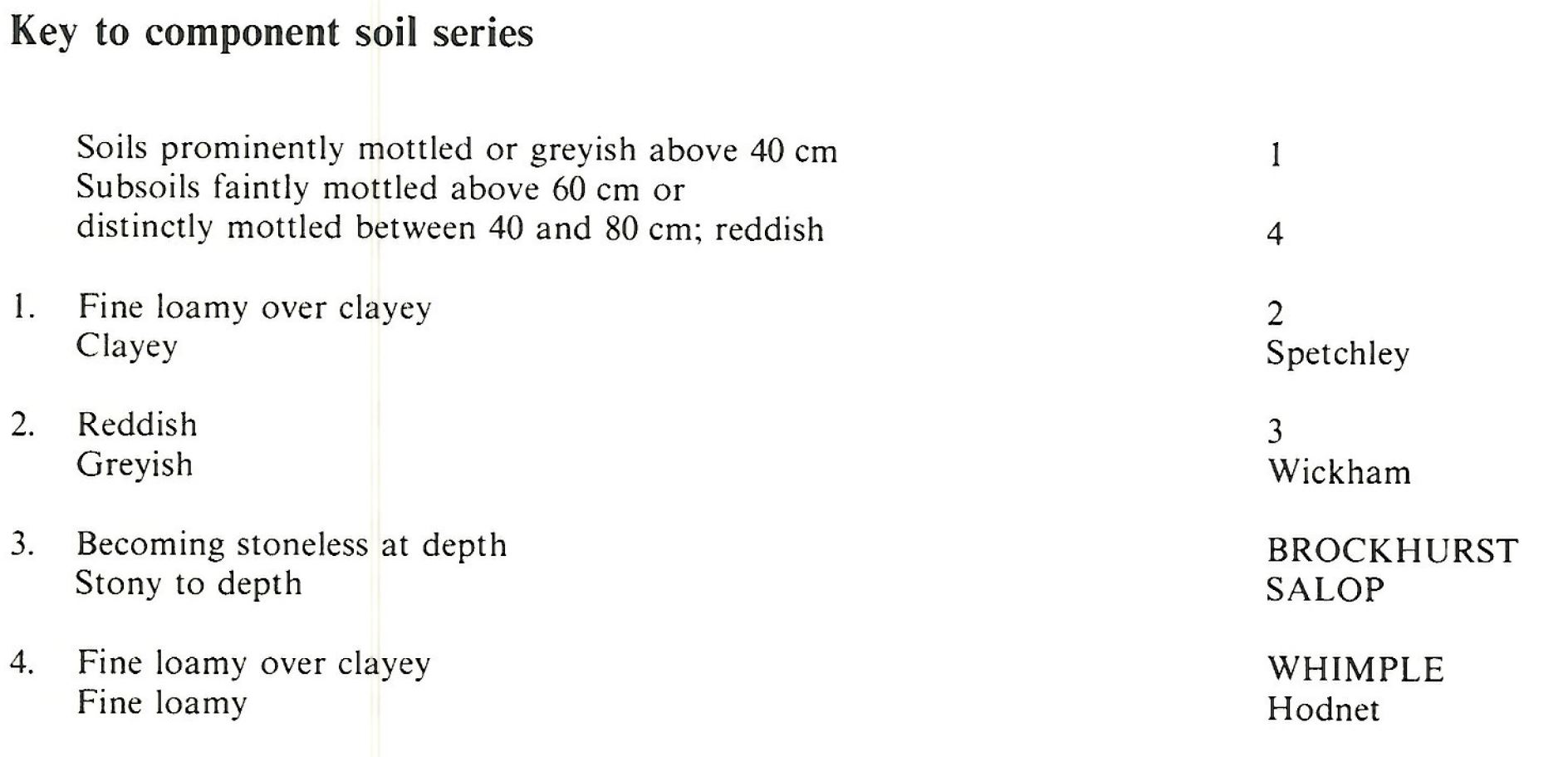 |
Typical Landscapes
South Western Region
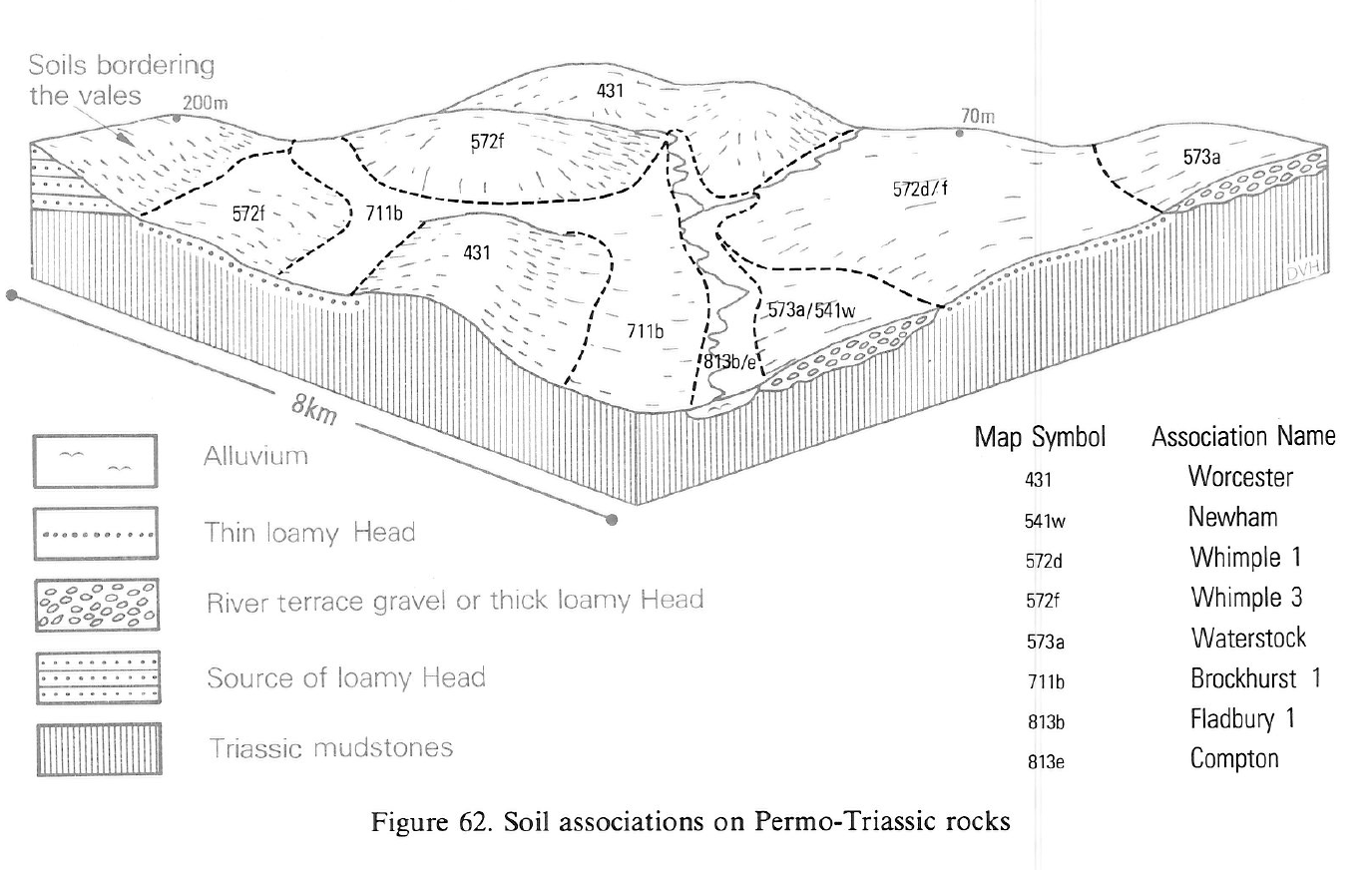 |
Midlands
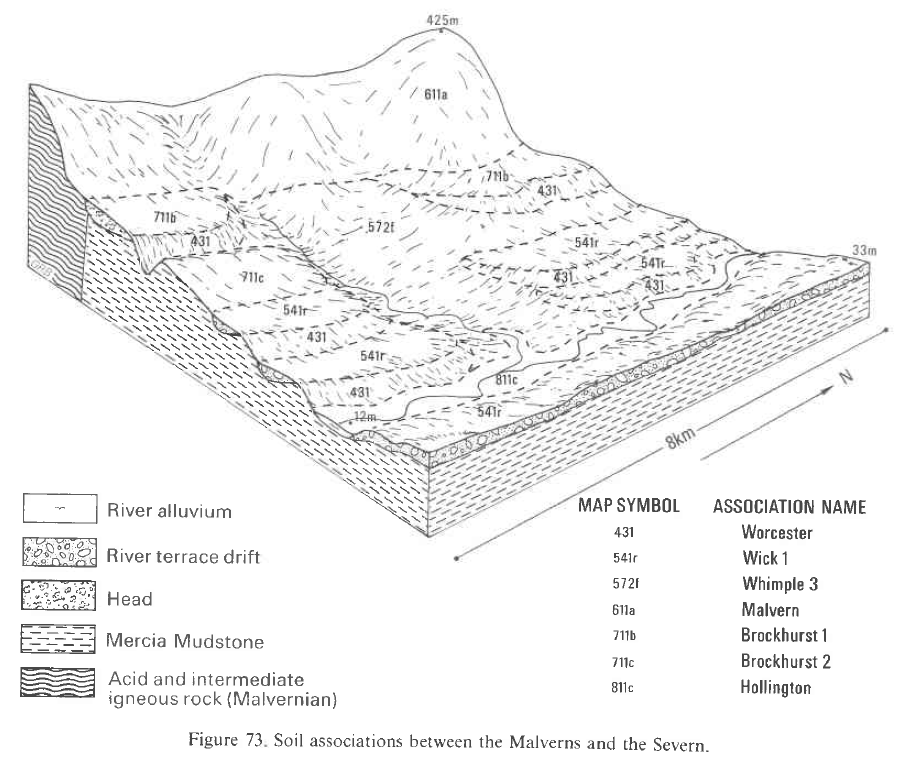 |
All information Copyright, Cranfield University © 2025
Citation: To use information from this web resource in your work, please cite this as follows:
Cranfield University 2025. The Soils Guide. Available: www.landis.org.uk. Cranfield University, UK. Last accessed 25/04/2025
